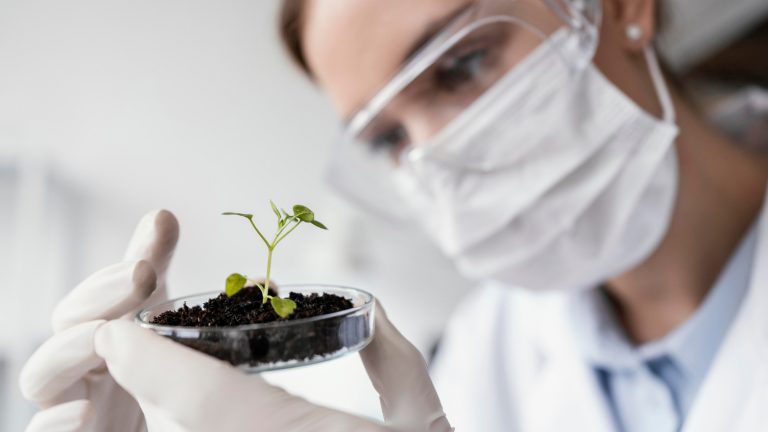Marijuana cloning is a popular technique used by growers to reproduce genetically identical plants from a mother plant.

This process allows growers to preserve the traits of a particular strain and ensure a consistent harvest. In this comprehensive guide, we will explore the step-by-step process of marijuana cloning, including the tools and materials needed, the best practices for success, and tips for maintaining healthy clones.
Understanding Marijuana Cloning
Cloning is a form of asexual reproduction where a cutting, or “clone,” is taken from a mother plant and grown into a new plant with identical genetics. In the case of marijuana, this process allows growers to replicate a plant that exhibits desirable traits, such as high potency, yield, or resistance to pests and diseases. Cloning is a cost-effective way to produce consistent, high-quality plants without the need for seeds.
Benefits of Marijuana Cloning
There are several benefits to marijuana cloning:
- Preservation of Genetics: Cloning allows growers to preserve the genetics of a particular strain, ensuring that desirable traits are passed down from generation to generation.
- Consistency: Clones taken from a mother plant will exhibit the same characteristics as the mother, including growth pattern, flowering time, and cannabinoid profile, leading to a consistent harvest.
- Time and Cost Savings: Cloning eliminates the need to germinate seeds, which can save time and reduce costs associated with purchasing seeds.
- Control Over Growth Characteristics: By cloning, growers can control the size and shape of their plants, making it easier to manage space and optimize yields.
Step-by-Step Guide to Marijuana Cloning
Step 1: Selecting a Mother Plant
Choose a healthy, vigorous mother plant with desirable traits such as high potency, yield, and pest resistance. The mother plant should be at least two months old and in the vegetative stage.
Step 2: Preparing the Cloning Area
Set up a clean and sterile cloning area with adequate lighting, temperature, and humidity control. Use a cloning dome or humidity dome to maintain high humidity levels around the clones.
Step 3: Taking the Cuttings
Take a cutting, or clone, from the mother plant using a sharp, sterile razor blade or scissors. The cutting should be 4-6 inches long and include at least two sets of leaves. Remove any large fan leaves to reduce transpiration.
Step 4: Treating the Cuttings
Dip the cut end of the clone in a rooting hormone to promote root growth. Place the clone in a rooting medium such as rockwool cubes, peat pellets, or soilless mix. Keep the rooting medium moist but not waterlogged.
Step 5: Providing Light and Humidity
Place the clones under a fluorescent or LED light for 18-24 hours per day to promote vegetative growth. Keep the humidity level around 70-80% to prevent wilting.
Step 6: Transplanting the Clones
After 10-14 days, the clones should have developed roots. Transplant them into larger pots filled with a well-draining potting mix. Continue to provide adequate light, water, and nutrients as the clones grow into mature plants.
Step 7: Maintaining the Mother Plant
After taking clones, continue to care for the mother plant to ensure a continuous supply of clones. Prune the mother plant regularly to maintain its health and vigor.
Tips for Successful Marijuana Cloning
- Choose the Right Time: Take cuttings from the mother plant during the vegetative stage, as this is when the plant is actively growing and more likely to root successfully.
- Optimal Temperature and Humidity: Maintain a temperature of around 70-80°F (21-27°C) and humidity levels of 70-80% in the cloning area to promote root development.
- Proper Lighting: Provide adequate lighting for the clones, using fluorescent or LED lights positioned 4-6 inches above the plants for 18-24 hours per day.
- Avoid Overwatering: Keep the rooting medium moist but not waterlogged, as overwatering can lead to root rot and other issues.
- Trimming and Pruning: Remove any excess foliage from the clones to reduce stress and promote root growth. Trim the lower leaves to allow for better airflow and light penetration.
- Patience: Cloning can take time, so be patient and allow the clones to develop roots before transplanting them into larger pots.
- Transplant Carefully: When transplanting the clones into larger pots, handle them gently to avoid damaging the delicate roots.
- Nutrient Considerations: Use a mild nutrient solution designed for seedlings and clones, as clones are sensitive to high nutrient levels.
- Avoid Shock: Minimize stress on the clones by maintaining a stable environment and avoiding sudden changes in temperature, humidity, or light.
- Monitor Growth: Keep a close eye on the clones as they grow, looking for signs of root development and overall health. Adjust the environment as needed to ensure optimal growth.
Conclusion
Marijuana cloning is a valuable technique for growers looking to preserve the genetics of a particular strain and produce consistent, high-quality plants.
Following the step-by-step guide outlined above and implementing the tips for success, growers can successfully clone their favorite strains and enjoy a bountiful harvest of high-quality cannabis. For a more comprehensive understanding, explore our blog for detailed insights on marijuana cloning techniques.
